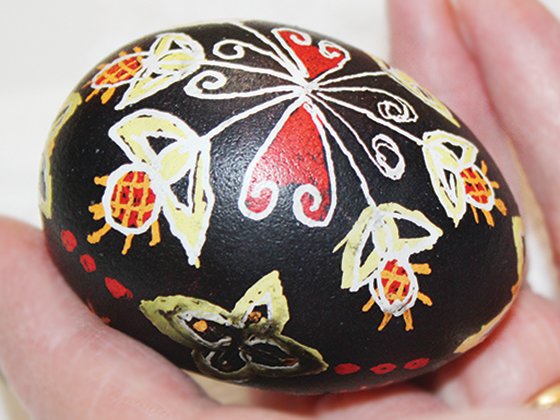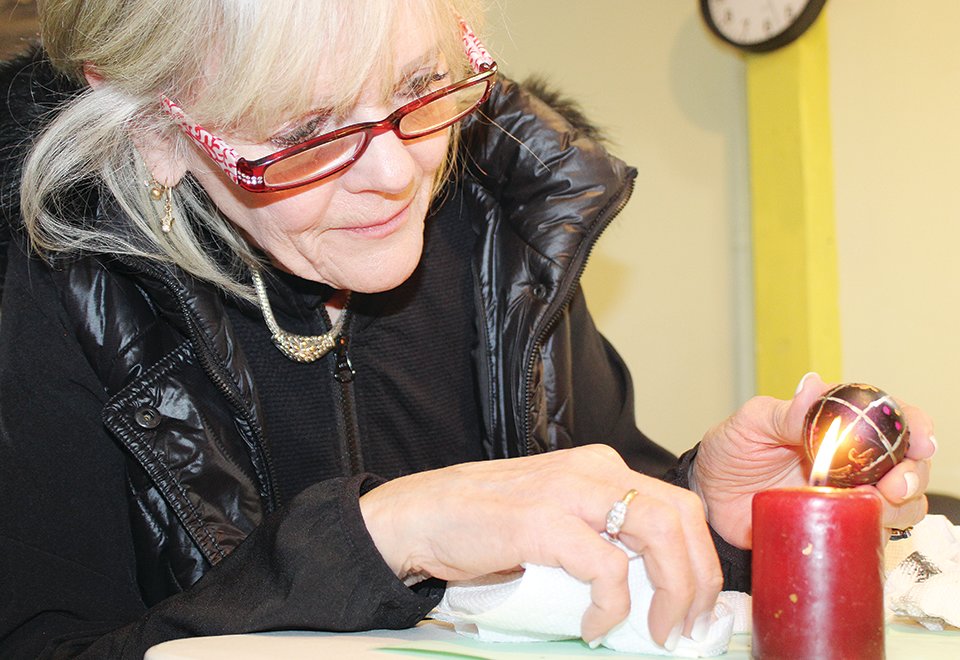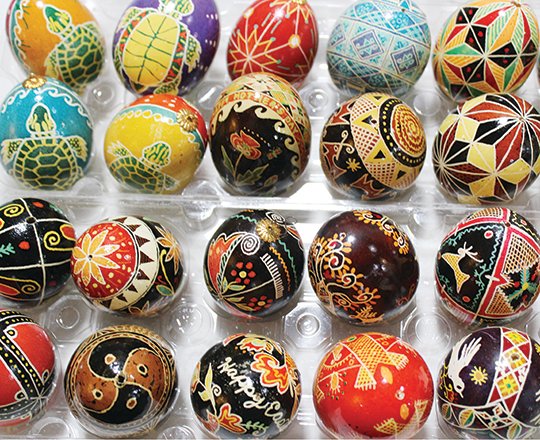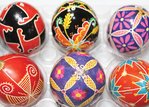Support the Timberjay by making a donation.
Easter traditions from a country now under siege
Class teaches ancient craft from Ukraine
SOUDAN - John and Denise Lindquist are not Ukrainian, but they are fascinated with the traditional Ukrainian art of pysanky, colorful hand-painted eggs that feature complicated geometric and floral …
This item is available in full to subscribers.
Attention subscribers
To continue reading, you will need to either log in to your subscriber account, or purchase a new subscription.
If you are a current print subscriber, you can set up a free website account and connect your subscription to it by clicking here.
If you are a digital subscriber with an active, online-only subscription then you already have an account here. Just reset your password if you've not yet logged in to your account on this new site.
Otherwise, click here to view your options for subscribing.
Please log in to continue |
Easter traditions from a country now under siege
Class teaches ancient craft from Ukraine
SOUDAN - John and Denise Lindquist are not Ukrainian, but they are fascinated with the traditional Ukrainian art of pysanky, colorful hand-painted eggs that feature complicated geometric and floral designs.
“It was a good time to offer this class,” said Denise, who along with John taught a beginners’ class to about a dozen women at the Vermilion Park Inn, that raised some funds for the Lake Vermilion Cultural Center.
Pysanky have been in the news all month. With the focus on the war in Ukraine, people around the world have been teaching and learning this ancient craft, which traditionally issaid to be a sign of peace.
Most who signed up for the class were very aware of the cultural focus, and conversation often wandered to the fates of families whose lives and homes were being destroyed by the current Russian invasion.
The class was offered one day after Easter was celebrated here, but the week before Orthodox Easter, which is observed in Ukraine.
The pysanky tradition dates back to the times before Christ. The brightly colored eggs helped herald in the beginning of spring, and then became associated with the Easter holiday. Traditional patterns and designs were passed down through generations in each family, along with the recipes for the natural dyes that were used.
There are many other stories related to the eggs and the power and good luck they conferred.
The eggs, like the country they represent, are both fragile and strong. If stored out of the sun, the colorful dyes last for generations.
John and Denise first learned the art of Ukrainian egg decorating when they took a class in 1985 from a renowned pysanky artist named Lucy Karcok, whose eggs are displayed at the Smithsonian. They continued creating eggs, learning as they went. They taught their four children the craft, and it is something the family likes to do in late winter each year.
“The peasants believed there was great power embodied in the egg, so they decorated them in the spring to celebrate the renewal of nature and life,” Denise said. “Geometrically decorated eggs with stylized animals were given to symbolize protection, health, fertility, love, bountiful harvest, prosperity, etc. Once Christianity arrived, symbols of the church and love of God were incorporated.”
The Lindquists have taken the tradition and made it their own. Some of Denise’s favorite creations are a series of eggs decorated with turtles, which were their children’s favorite animal.
“I like that it is good prayers and wishes if you gift one of these eggs to someone you care about,” she said. “It is also fun to share how to create them with others.”
The skill is an ancient one, she said. “And it is good to keep this type of thing going.”
Traditionally, the dyes used were derived from nature, she said, and a wax resist process was used. Melted beeswax was applied to the egg between dipping in different colored dyes, starting with lighter colors and then adding a new color in each step. Nowadays, commercially purchased dyes are used, though Denise said learning to make natural dyes was on her “bucket list.”
A candle was, and still is, used to melt the wax off the eggs between each trip into the dye bath. The kistka, a copper cone for scooping beeswax which is attached to a dowel and heated by a candle flame, is still traditionally used, but Denise mostly uses an electric version, which allows more detailed placement of the wax on the egg. She still practices with the old-style kistka, and that was the task given to the participants in the class.
“Everyone enjoyed themselves,” she said, “but some had trouble with the kistka. It does take some practice.”
Getting the precise geometric and floral patterns placed on a real egg also takes patience and practice.
“This is very challenging,” said participant Teresa McCue Thompson, who herself is an expert and teacher of rosemaling, a style of Norwegian folk art painting.
Students rose to the challenge and produced a nice selection of very colorful eggs. The decorating is done on raw eggs, so stable hands are required as the eggs are painted with wax, dyed, cleaned of wax, and painted again and again. Once completed, the eggs are sprayed with varnish, and once dry, will have two small holes poked in them so the egg white and yolk can be carefully blown out.
Creating a symmetrical design on the egg is a challenge for some, but Denise said it came easily to her.
“It just seems obvious to me,” she said. She started out studying art in college but graduated with a dual major in music and biology. She still teaches piano, but lately those lessons have been over Facetime. Artistic talent runs in her family, she said, noting she has some very talented sisters.
John, a retired St. Louis County health inspector, is a long-time volunteer with the Boy Scouts, leading a troop for 16 years when their children were younger. Denise said they have done the class with kids this age, but often will pencil in the patterns on the eggs to get them started.
The couple retired to a rural area outside of Soudan and live off-the-grid. They garden, harvest and forage for wild foods, make wine and beer, and put up a lot of their own foods. Denise sells their jams and jellies, maple syrup, breads, and treats at the Tower Farmers Market. Right now, they are busy harvesting maple sap from a large grove of trees out on Birch Point that will be sold at the farmers market this summer.
“Our cabin is a work in process,” she said. “But it was always a dream to live out here in the woods.”
The couple has many other hobbies.
“We like to dabble in interesting things,” she said.
The couple was also happy to be able to help out the Lake Vermilion Cultural Center. Once the interior of the building is completed, it will become a home for many types of artistic classes, educational talks, and concerts.













